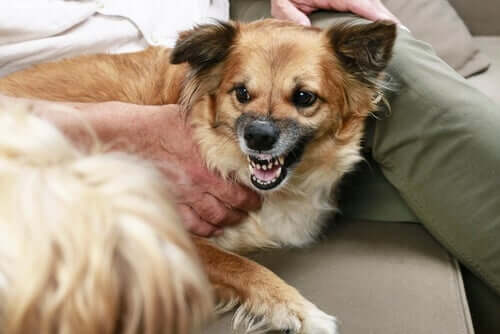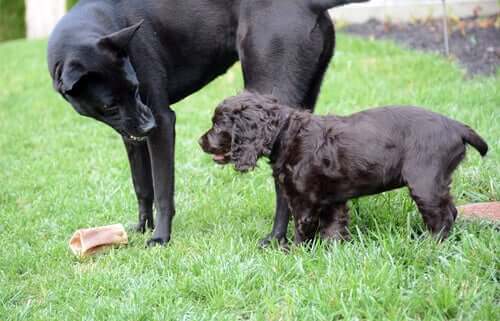Growling in Dogs - What's It all About?

We’re well aware that dogs are a lot more complex than we used to believe. There are many studies about why dogs behave the way they do. This is great news because someday we’ll be able to understand what they’re trying to tell us. Growling in dogs is only a small part of the many ways they use to communicate.
Growling seems like a form of aggression and we’re often inclined to recriminate and discourage it. Of course, this only worsens a situation because we’re not really listening to what the animal is trying to tell us.
Thus, we end up with an aggressive dog who may bite someone and end up abandoned, stigmatized, and even euthanized in the worst of cases. This situation only continues to feed the stereotypes around specific breeds or about dogs in general.
Does growling in dogs mean aggressiveness?
Growling in dogs isn’t only about aggressiveness. It’s just a part of the many forms of dog behavior, and they mainly do it to communicate. Depending on the situation, the training of a dog, their character or emotional problems, and their past experiences, a growl may be about:
- Fear
- Discomfort
- Self-defense or defense of a member of their family
- Aggression
- A desire to play
- The defense of a resource
- Threats
As you can see, growling in dogs can actually be positive. Many dogs growl and bark during games and also when they’re around other dogs or human friends. Thus, their growls aren’t necessarily a threat but a part of their enjoyment about a game.
Defense of resources
One of the many reasons why a dog might growl is to defend their resources such as food, toys or other objects they consider precious. Most owners get angry when this happens and even take away what the animal is protecting.
This is not the case at all. The only thing the dog feels in this kind of situation is that their owner is taking away something that’s very valuable to them. So, their bond with their owner weakens. Then, out of frustration, the dog might, in fact, bite.
The best way to handle something like this is to try to get the dog to lose interest in that particular item. For example, don’t take away a toy the dog values a lot. On the contrary, give them many other toys that they’ll like. This is because when the toys lose their value when the animals have so many of them.

Does growling in dogs mean they’re about to bite?
Any dog can bite and growling isn’t always the prelude to it. There are times when a dog growls and then just walks away. As you can see, this is a form of communication.
On the contrary, if the stimulus that’s causing the growl doesn’t go away the dog may, in fact, bite. However, the dog actually tells you when they’re going to bite through their body language. It’s quite clear from them that something is really, really bothering them.
Thus, it’s important to know how dogs communicate and what they’re trying to tell you. Unfortunately, many of them have stopped putting some of their previous behavior into practice because they’ve noticed these have no effect on us, and they may bite.

Can you deter growling in dogs?
We cannot pretend that a dog never growls as it’s part of their nature, the same as barking. Both are a natural form of communication, and it’s normal and healthy for them to do so. As always, keep in mind that excessive growling or barking isn’t normal so pay close attention to them.
Anxiety, stress, mismanagement of frustration and other problems that a dog can suffer promote behavior such as growling. For this reason, don’t try to correct their growls. Instead, look for the reason why your pet is behaving in this fashion.
All cited sources were thoroughly reviewed by our team to ensure their quality, reliability, currency, and validity. The bibliography of this article was considered reliable and of academic or scientific accuracy.
- Arias, M. (2009). Caso clínico de agresividad canina por conflicto social dirigida a miembros de la familia. Clínica veterinaria de pequeños animales: revista oficial de AVEPA, Asociación Veterinaria Española de Especialistas en Pequeños Animales, 29(4), 0217-226.
- Damián, J. P., Belino, M., Rijo, R., & Ruiz, P. Etología clínica canina, agresividad y el cimarrón uruguayo. al perro cimarrón uruguayo, 37.
- Elgier, Á. M., Jakovcevic, A., Mustaca, A. E., Bentosela, M., & Barrera, G. (2009). Problemas de comportamiento en los perros domésticos (canis familiaris): aportes de la psicología del aprendizaje. Revista de Psicología, 18(2), ág-123.
- Rugaas, T., & Ramos, B. P. (2005). El lenguaje de los perros: las señales de calma. Kns ediciones.
